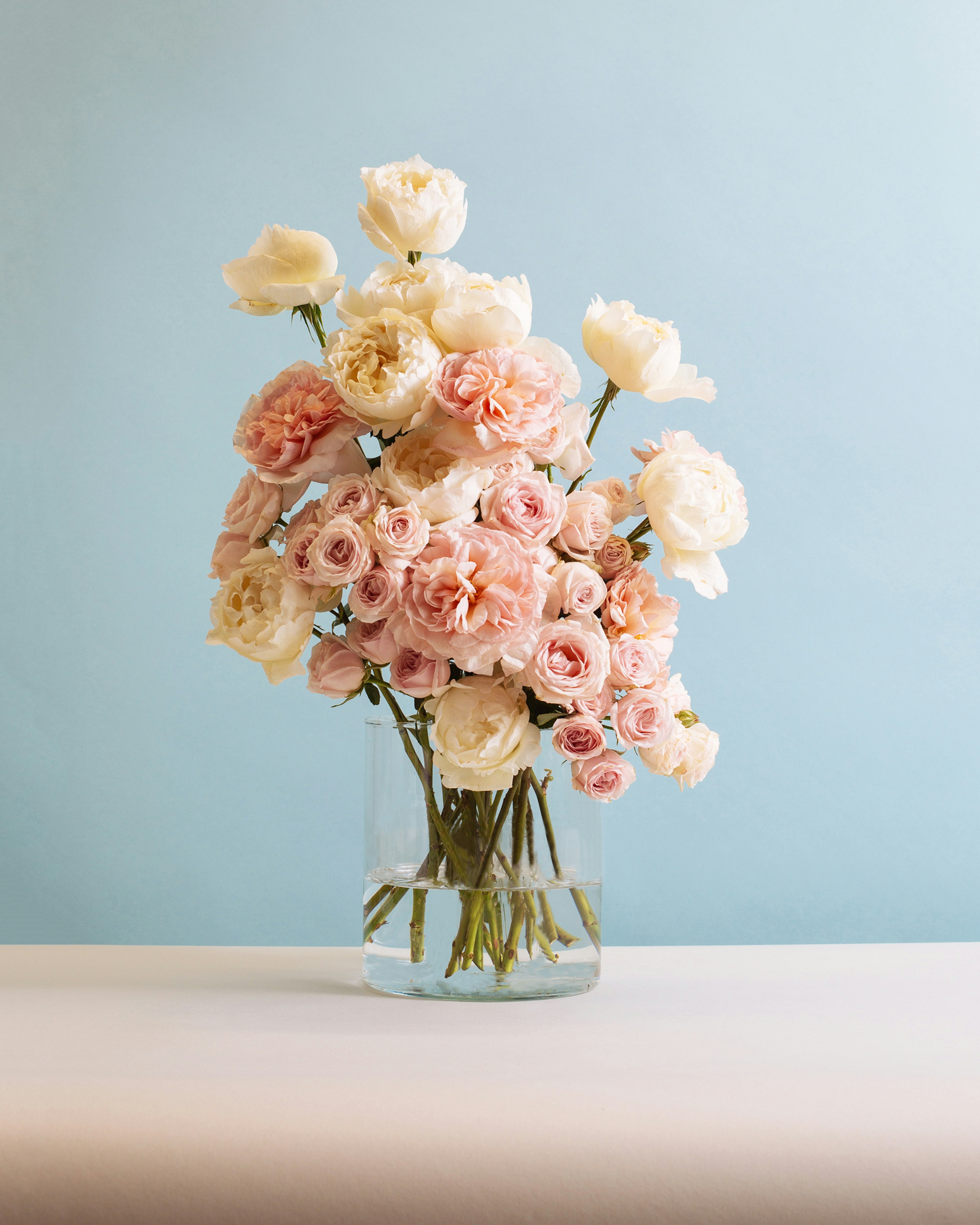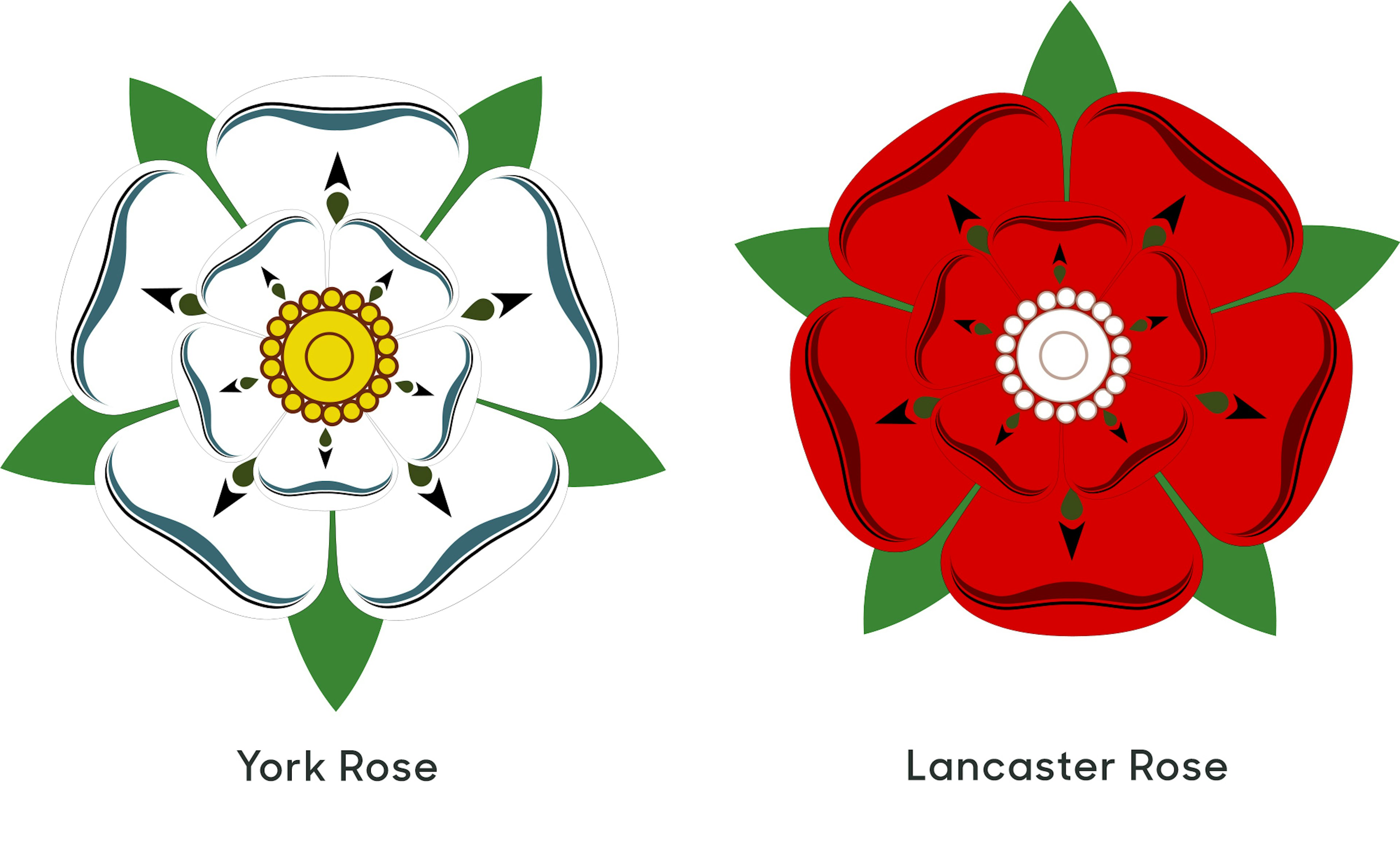Shop
Occasion
Same day delivery
Want to sell on Floom?
Shop
Occasion
Same day delivery
Want to sell on Floom?

Rose
Flower of the Month
Whether it be for their association with love, Valentine's Day, romance, war or politics, or for their storied linkage with beauty, roses have a long, complex, and colourful history. The rose is also the birth flower of June, so what better stem to celebrate as our flower of the month?
A brief history…
Let’s rewind to way back when… According to fossil evidence, the rose is a colossal 35 million years old – boasting 150 species found throughout the Northern Hemisphere, including northern Africa – but it was only 5,000 years ago that the garden cultivation of such stems started.

During the Roman period, roses were grown extensively in the Middle East for medicinal purposes, as a source of perfume, and as confetti at special occasions. But it was in post-Roman times that the rose found its symbolic value in the 15th century. While the white rose was symbolic of York, the red was synonymous with the house of Lancaster – collectively they were associated with the “War of the Roses”.

By the 17th century roses – and rose water – were in high demand used widely as legal tender meaning you could trade your anti-inflammatory drops for food. It was not long before Napoleon's wife Josephine established an extensive collection of roses at Chateau de Malmaison, an estate seven miles west of Paris, that was painted by Pierre Joseph Redoute and is still considered one of the finest records of botanical illustration.

Skip to the late 18th century. Cultivated roses were introduced into Europe from China, the ancestry from which most modern-roses stem and still a hot topic of interest for botanical boffins worldwide.
The English Garden Rose
The English Garden Rose sounds like it should be the most traditional and regal of all the roses, right? A bloom that harks back to the days when gardens were jolly well English. But, like most attempts at recreating some perceived golden age, the result is actually something that never really existed in the first place. You see, the English Garden Rose is actually a hybrid created by the famed rose breeder David Austin in the 1960s – a creation that aimed to fuse the old-fashioned shapes and fragrances of classic rose-types with a more diverse, and modern, range of colours. “A rose to rule them all!” we rejoice. Perhaps not, despite the ‘English’ moniker, the truth is it’s a breed made up of many varied tribes. The typical winter hardiness of the classic rose was also compromised in the process…

The Perfect Rose
Speaking of compromises, according to many researchers roses have been losing their evocative scent purely down to the fact that many gardeners have favoured the appearance of the stems while breeding, rather than their aroma (in turn, losing a crucial enzyme RhNUDX1, that generates a chemical called monoterpene geraniol, one of the sweetest-smelling parts of rose oil). Is a rose even a rose, if it doesn’t smell like a rose…

Rose-Tinted
Roses are red, violets are blue… that’s not necessarily true. In fact, roses come in a vast array of vibrant hues from from classic red and pink, through to orange, yellow, lavender and white. While red are traditionally associated with love and romance, pink are widely regarded as a sign of gratitude and appreciation – perfect to send to a loved one or a friend – and white are tied to the themes of purity, innocence and sympathy. Meanwhile, roses of the yellow variety are a sign of both joy and friendship, and orange channel the welcome traits of enthusiasm, passion and desire. But when it comes to the rose that possesses the most power, look to those of the lavender variety – consider them your Cupid’s bow for they’re said to represent love at first sight.




